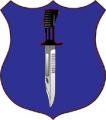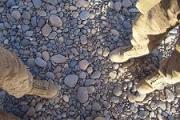It's interesting how US Army and USMC tactical thought has been so powerfully influenced by an AR that was competing against LMGs back in the World Wars, and still exerts such force that neither the Army nor the Marines seem to be able to dispense with the "Automatic Rifleman" role and transition to the Light Machine Gunner at Squad level in doctrine as well as equipment. Even two generations after most other Western Armies did so. Very curious; not sure what to make of this situation.





 A few of those in each Squad or Section conceivably could resolve certain nagging matters.
A few of those in each Squad or Section conceivably could resolve certain nagging matters. 








 to go with the Co Sniper section...) per platoon held and trained in a Company level MG platoon with adequate ammo bearers but agree totally on no 5.56 belt fed for the infantry. SOF and some mech / MP uses for such a weapon possibly exist though perhaps not enough IMO to justify the logistic problems of another weapon system.
to go with the Co Sniper section...) per platoon held and trained in a Company level MG platoon with adequate ammo bearers but agree totally on no 5.56 belt fed for the infantry. SOF and some mech / MP uses for such a weapon possibly exist though perhaps not enough IMO to justify the logistic problems of another weapon system.

Bookmarks